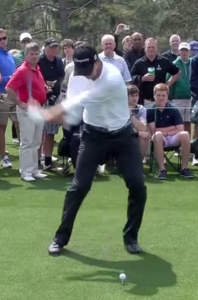After losing the lead in the final round of last week’s Hyundia Tournament of Champions and losing in a playoff to champion Patrick Reed, Jimmy Walker redeemed himself by blowing away the field and repeating as the winner of this year’s Sony Open in Honolulu, Hawaii.
In this week’s Winner’s Circle, we break down how Walker leaned on his strength driving the ball and his distance off the tee.
Walker, who is now no stranger to leader boards on the PGA Tour, defended his 2014 victory at the Sony Sunday by shooting a final round 7-under 63 and won by 9 strokes over Scott Piercy!
Jimmy Walker has had a fantastic start to his 2015 season opening up with a second, and now first place finish in as many weeks. He does so many things well from a statistics standpoint that has allowed for much of his success on tour over the last two seasons. One of the statistics that may surprise people is his overall driving distance. Walker, who is a slender and tall fellow, ranked 19th last year on tour in overall driving distance averaging 301 yards off the tee, and if you think overall driving distance doesn’t equate to lower scores and more wins on the PGA Tour you would be sadly mistaken!
Walker does two things that I love that helps contribute to his strength and power off the tee. He sets a great foundation in the backswing, while still allowing his upper body to pivot properly, he then produces a powerful squat motion as he begins the downswing. This provides stability and allows him to use the ground to create maximum force through the strike. These are two very important keys that I see in many of the longer players on both the PGA and LPGA Tours.
Below we will take a look at Jimmy Walker’s backswing pivot that allows for what I call the foundation of the backswing. You will see that he has made a massive shoulder turn, but while he’s doing this he is controlling his lower body. If you look at his right hip (trail side) it’s inside of his right foot instep. This means that as he began his backswing his trail hip moved immediately back and up behind him without any lateral motion. This is a crucial move in helping him create force in the beginning of the downswing. You will see as he begins the downswing the pressure shifts forward in the lower body, separation is maintained between the knees, and he’s in a slightly “squatty” position. These are key ingredients to maximizing distance.
Next week, the PGA Tour will travel back to the mainland for the Humana Challenge at PGA West in La Quinta, California. Patrick Reed will attempt to defend his 2014 title as he compete’s against a field that shoots notoriously low scores out in the desert. Tune in to next weeks Weekly Winner Circle for more tips on how to lower your scores.



